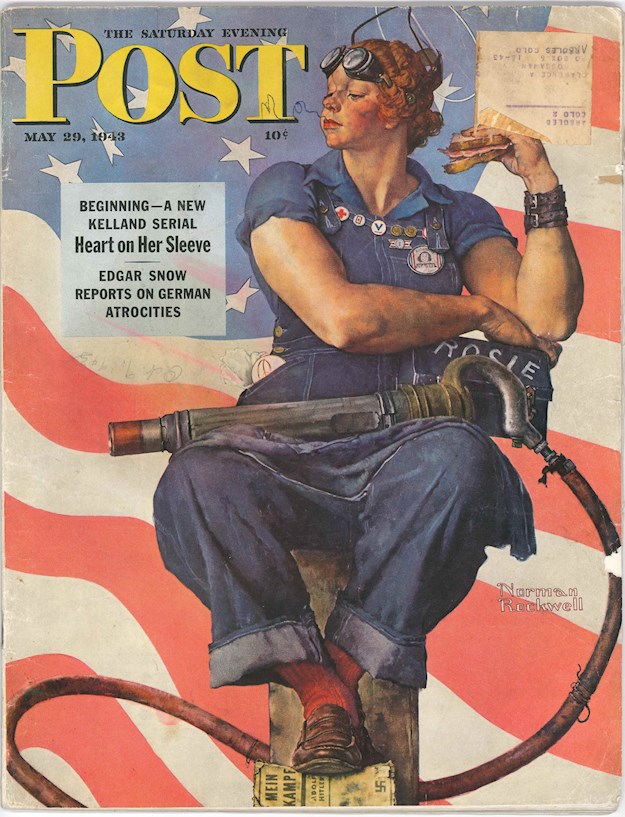Rosie the Riveter is the symbol for all the women that worked in the war industry during the Second World War. As the men went to the front, hundreds of thousands of women took their places in the factories and with their tireless efforts contributed greatly to the Allied victory.
Rosie the Riveter is a fictitious character that became popular during the Second World War. In 1942 Redd Evans and John Jacob Loeb wrote a song about a female riveter which became a national hit in the United States. From that moment onward, Rosie the Riveter became a popular nickname for working women. In 1943 Norman Rockwell drew a picture of a female riveter whose lunchbox read ‘’Rosie’’, from then on people could put a face to the name. Rockwell’s picture showed a very muscular woman who did not wear any make up and is now not generally associated with Rosie.
The image that most people today would associate with Rosie the Riveter – where she is depicted as a woman flexing her arm in a blue overall and red bandana – was created by the Westinghouse Company in 1943. During the war the image was not used outside of the company. It was only during the 1980’s that this image was rediscovered and became popular as a feminist symbol and since then it has become the most well-known depiction of women in the war industry.
After the Second World war most of the war stories concerned soldiers and battlefields. The enormous contribution of the thousands of women that worked in the factories and produced vast amounts of material needed by the soldiers, was largely overlooked. Only from the 1970’s onwards has this oversight been corrected and has Rosie claimed her rightful place in the history of the Second Word war and Liberation.


